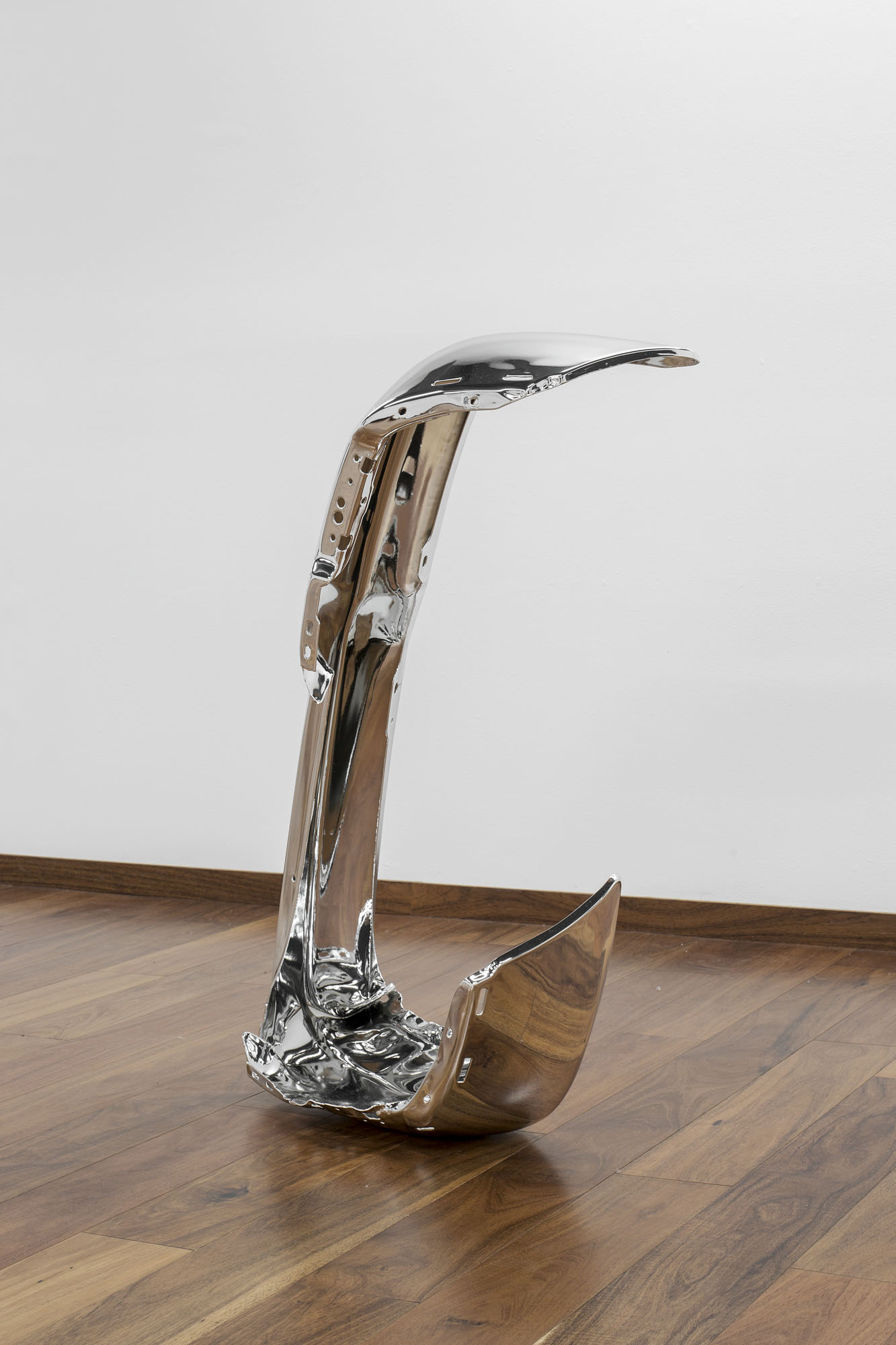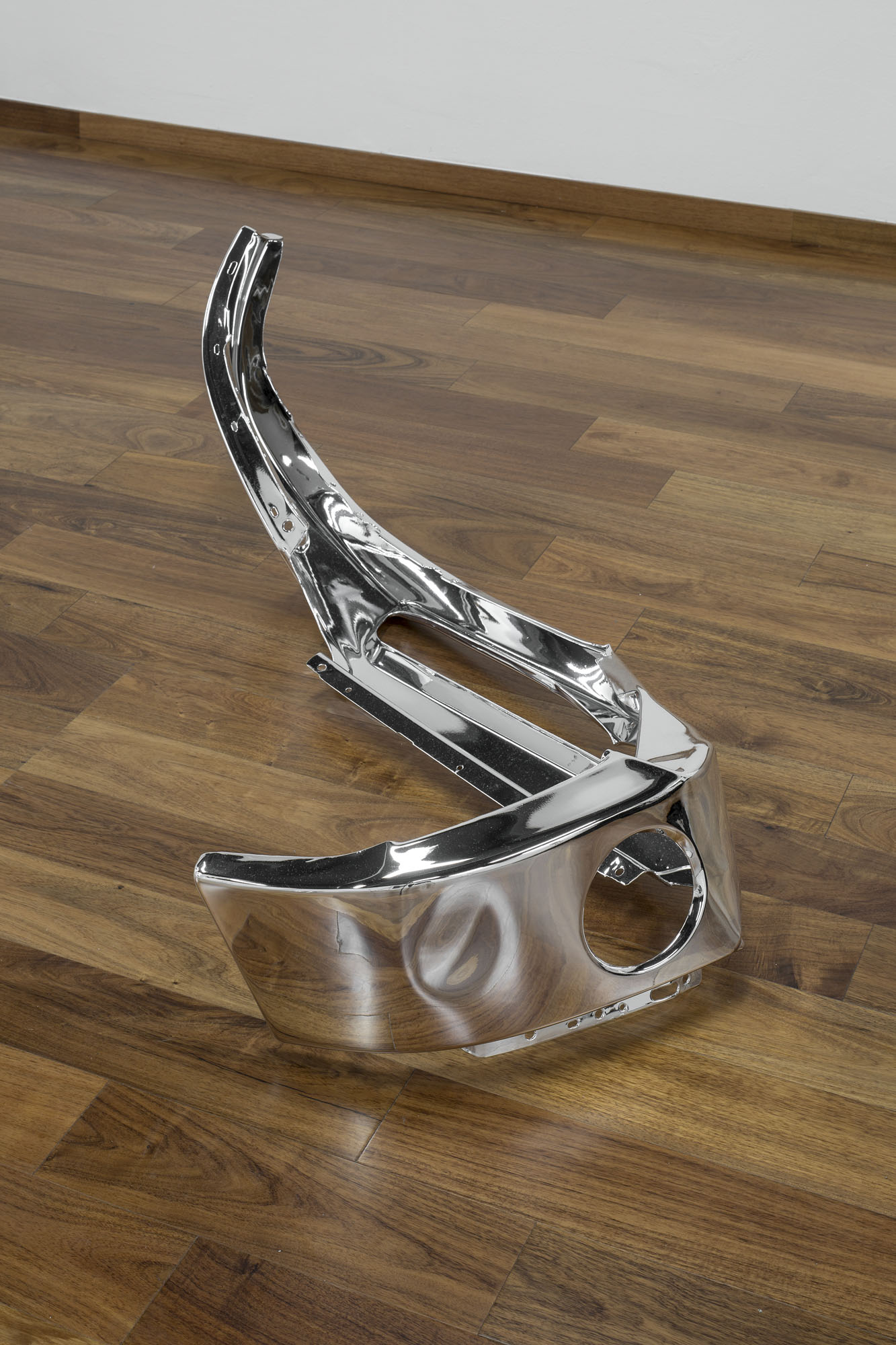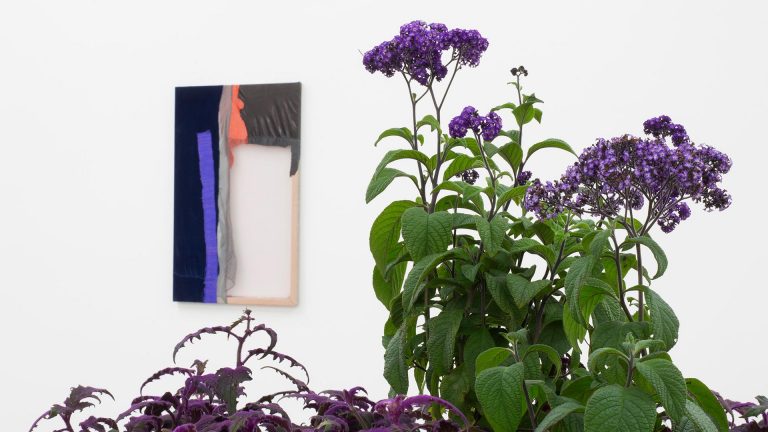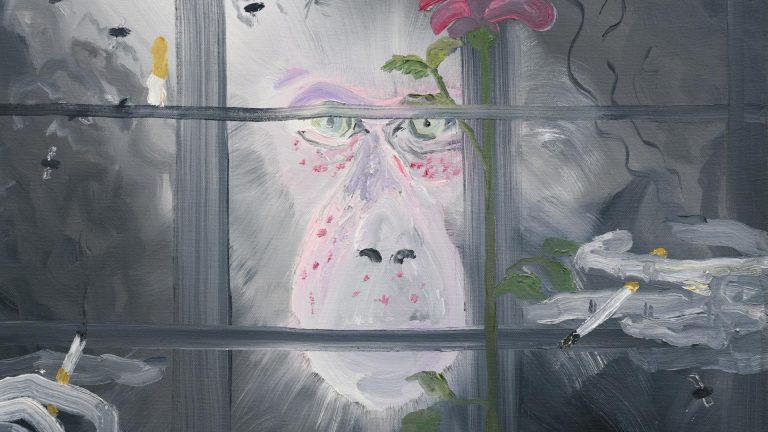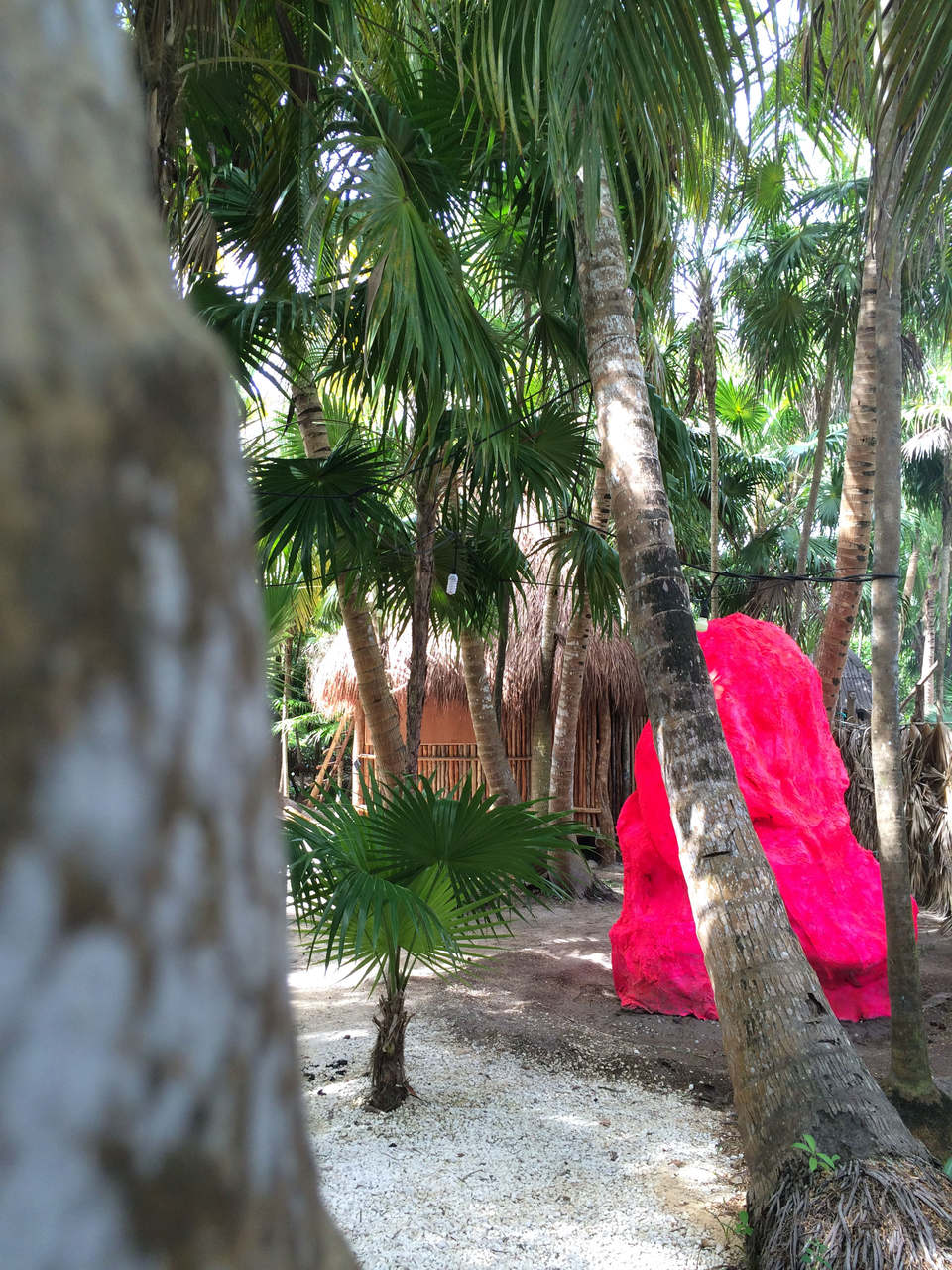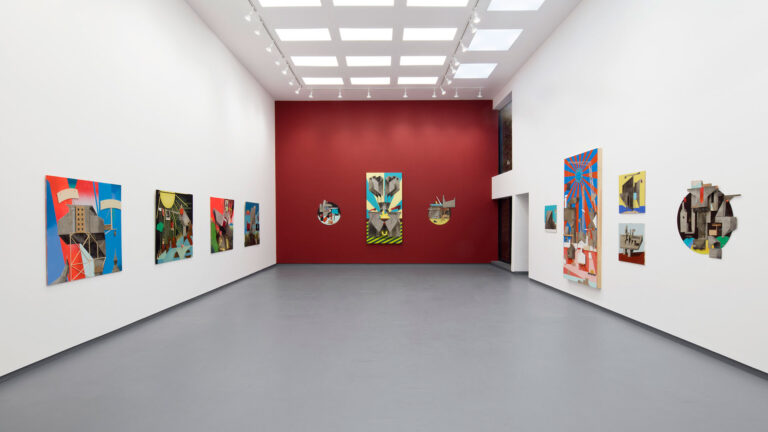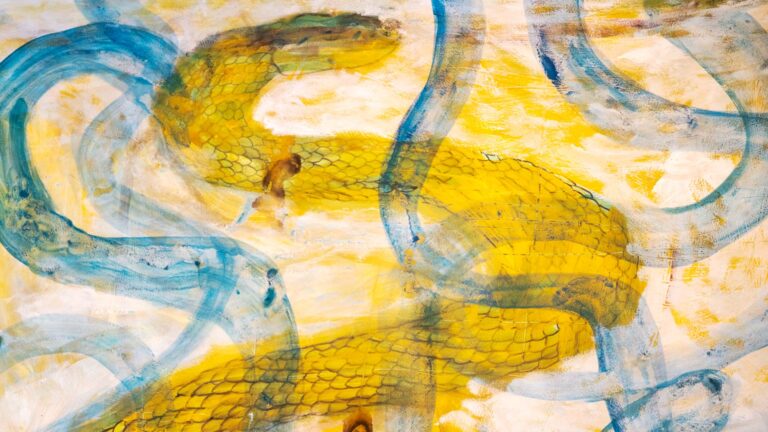Artist: Dario Escobar
Exhibition title: What isn’t good for the goose isn’t necessarily bad for the gander
Venue: Proyectos Monclova, Mexico City, Mexico
Date: June 20 – August 10, 2019
Photography: all images copyright and courtesy of the artist and Proyectos Monclova, Mexico City
What Dario Escobar is up to becomes perfectly clear when you take the road along the Gulf of Mexico between Poza Rica and Casitas in the state of Veracruz. It’s not unusual to see convoys of odd couplings, mostly two cars, two trucks or even two yellow school buses hooked up together. The one in front does the pulling while the other one, following blindly and loaded with all sorts of tools and spare parts, passively plays the trailer.
The explanation is simple: Guatemala salvages unwanted vehicles from the United States, and these weird pairings making their way through Mexico are heading south to help fuel a largely agricultural economy. Guatemala recycles right, left and center, and this is the inspiration and the message of Escobar’s collection of pressed-steel bumpers; he’s busily turning old and drab into bright and shiny with a brand new jacket of dazzling chrome. The scintillating surfaces twist and turn under the somber gaze of white circles outlined with engine oil, in a far from new feature of the Escobar oeuvre: in 2005 he started sneaking into parking garages in his native Guatemala City and sliding big, immaculate sheets of paper under the cars. Later he would reclaim these archives of worn, leaky engines: fortuitous shapes that he framed and exhibited, with the unstable color of the oil gradually altered by exposure to the air.
This time, though, there are no accidents, no leaving things to chance. Escobar has decided to master his oiled surfaces, to do his best to keep the areas of white within each frame free of all intrusion. Even if, sooner or later, the oil is going to bleed through the paper and gradually contaminate these provisionally spared sections. Escobar controls his compositions until all-pervasive entropy steps in and once more throws our endless yearnings for order and perfection into disarray. Order and disorder are key factors in his work, just as they are in politics and economics. He’s out to confuse the two—and confuse us at the same time. Faced with some of his pieces we can’t tell if what we were inclined to see as order is not actually its opposite.
Chrome gives his distorted objects an apparent cohesiveness, while the seemingly austere, precise oil compositions are going to become less uncompromising over time.
Escobar loves the objects he meddles with and freezes in novel sculptural poses: rearrangements that likewise fluctuate between chaos and discipline. He enjoys presenting accumulations of the same object, a bit like Arman (Nice 1928—New York 2005) back in the day. Born in France, this naturalized American made sculptures of the same object repeated over and over, agglutinated, sealed in transparent acrylic or imprisoned in concrete.
And while we’re looking into the tricky matter of possible lineages, I’d like to suggest a link between the damaged bumpers—their surfaces, impaired by impacts and bucklings from accidents beyond the artist’s control, are hidden beneath a fresh layer of glossy, reflective chrome—and the famous Suite Milanaise by the sculptor César (Marseille 1921—Paris 1998). A few months before his death César made the last of his series of “compressions”: the bodies of thirteen Fiat Mareas put through a hydraulic press. It was not until they were compressed that he had the resultant blocks coated with the colors of the Fiat range; thus he obtained thirteen impeccably monochrome sculptures of pressed, crumpled steel, free of the least flaw or shortcoming.
Apart from the disguising and artistic transformation of objects deliberately destroyed (César) or salvaged (Escobar), the common factor here—at two different periods—is a readiness to delegate part of the decision-making to the defiant forces of fate. Over the years César had gained steadily increasing mastery of the art of compressing metal, notably by arranging it in the press in a way calculated to produce as near as possible the work he had in mind; but part of the operation always eluded him. Similarly Escobar appropriates the consequences of accidents beyond his control and delights in not knowing how his engine oil drawings are going to evolve.
The random and the accidental are not new in art, but it’s rare—and thus deserving of attention—to be offered a lesson in humility by artists whose common understanding is aimed at unequivocal control of their material.
— Michel Blancsubé
Mexico City, June 2019
Dario Escobar, What isn’t good for the goose isn’t necessarily bad for the gander, 2019, exhibition view, Proyectos Monclova, Mexico City
Dario Escobar, What isn’t good for the goose isn’t necessarily bad for the gander, 2019, exhibition view, Proyectos Monclova, Mexico City
Dario Escobar, What isn’t good for the goose isn’t necessarily bad for the gander, 2019, exhibition view, Proyectos Monclova, Mexico City
Dario Escobar, What isn’t good for the goose isn’t necessarily bad for the gander, 2019, exhibition view, Proyectos Monclova, Mexico City
Dario Escobar, What isn’t good for the goose isn’t necessarily bad for the gander, 2019, exhibition view, Proyectos Monclova, Mexico City
Dario Escobar, Crash XXII, 2019, Chromed iron and steel, Dimensions: 33.46 x 59.06 x 15.75 in, 85 x 150 x 40 cm
Dario Escobar, Crash XXV, 2019, Chromed iron and steel, Dimensions: 72.44 x 29.74 x 13.78 in, 184 x 73 x 35 cm
Dario Escobar, Crash XXVII, 2019, Chromed iron and steel, Dimensions: 57.48 x 23.62 x 22.44 in, 146 x 60 x 57 cm
Dario Escobar, Untitled No. 6, 2019, Motor oil on paper, Framed dimensions: 72.44 x 47.83 x 1.97 in, 184 x 121.5 x 5 cm
Dario Escobar, Circular Composition No. 02, 2019, Polyptych of eight framed pieces of motor oil on paper, Overall dimensions: 46.69 x 70.55 x 1.46 in, 118.6 x 179.2 x 3.7 cm
Dario Escobar, Circular Composition No. 04, 2019, Polyptych of four framed pieces of motor oil on paper, Overall dimensions: 26.93 x 30.87 x 1.46 in, 68.4 x 78.4 x 3.7 cm

